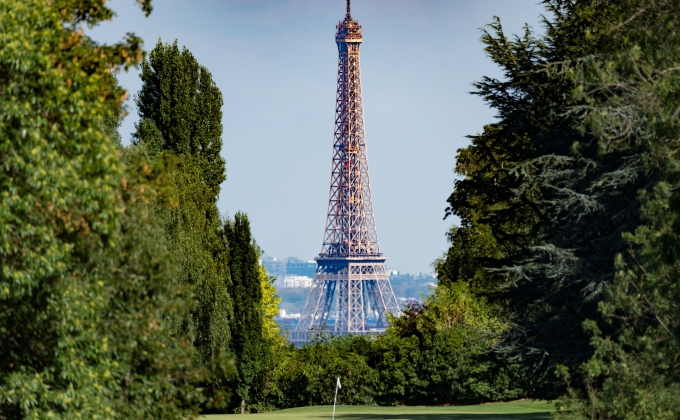Golf in France - Paris
Above: The Green Course at Golf de Saint-Cloud
Centered around Paris, the Île-de-France – literally “island of France” – is home to more golf courses than anywhere else, including a handful of distinguished, historic tracts. Some, like the ultra-private Morfontaine (another great Simpson course a few miles from Chantilly), are inaccessible unless a member is willing to take you, while many others offer a courteous welcome to visitors at a reasonable green fee as long as you give them enough notice. Exclusive as many of them are, the culture at these finer clubs is simple and unpretentious – in the words of David Lawday, a longtime Paris resident and former correspondent for The Economist, “What makes some of these more exclusive clubs different – Chantilly and Fontainebleau among them – is they have a sort of utter disdain for ostentation and show. Their class is in their disdain for all that frippery. There are no jackets and ties required; the dining rooms are very simple,but with excellent food.... It gives them a sort of dignity.”
On weekends, Parisians head to Fontainebleau, an hour’s drive southeast of the city, to enjoy the expansive pine and oak forest and visit the fabulous Château de Fontainebleau, famously enjoyed by a long line of rulers including Napoleon. A stone’s throw from the palace is Golf de Fontainebleau, the favorite of many: evoking British heathland courses, with rock outcroppings providing décor and hazards, it’s another Simpson gem.
Above: Golf de Fontainebleau
Golf de Saint-Germain, 40 minutes northwest of the city, is a superbly-maintained Harry Colt design reminiscent of the architect’s great British parkland courses Sunningdale and Swinley Forest. On a summer weekday, you can get onto Golf de Saint-Cloud, not far from the Bois de Boulogne, which boasts some of the most remarkable urban views of any golf course. Lawday – whose first marriage was to Anne Turnesa, daughter of amateur golf great Willie Turnesa (two-time U.S. Amateur winner, British Amateur champ, Walker Cup standout, and onetime president of the MGA) – remembers that his father-in-law “used to rave about Saint-Cloud. It’s on a wooded slope, and it has this terraced look over Paris: from several holes, you have an almost birds-eye view of the Eiffel Tower, you feel as though you can almost touch it.”
And then there’s the Ryder Cup venue, Le Golf National’s Albatros Course, 20 miles west of the city center. Designed by the American architect Robert van Hagge, it has been nudged and tweaked into champi-onship shape through its hosting of all but two French Opens since 1990, and had improved drainage and irrigation systems installed once it was awarded the Cup. There’s an audacious peculiarity to some of the holes, which should lend themselves nicely to match play. The crescent-shaped par-5 ninth, nearly 600 yards, plays into the wind and culminates in a sunken green complex with a tiny, bean-shaped raised putting surface: under the right conditions it will be difficult to hold even with a wedge. Several greens feature dramatic breaks, which may well come into play should the Euros decide to cut them quick; while the most recent touch-up shaved some of the incline off the large green of the par-3 16th, it has the potential to push approaches towards a watery exit, stage left.

Le Golf National, site of the 2018 Ryder Cup
Extracted from the April/May 2017 Met Golfer Article "Vive Le Golf!" by Ray Tennenbaum

